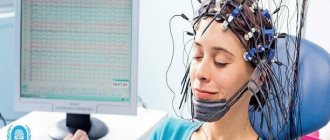Structural features
The spinal cord and brain are a single whole, an integral part of the nervous system. All mental functions, control of vital processes (activity, touch, sensitivity of the limbs) are carried out with their help. They are covered with protective structures that work harmoniously to provide nutrition and remove metabolic products.
The membranes of the spinal cord and brain are largely similar in structure. They continue the spine and envelop the spinal cord, preventing damage to it. This is a kind of “clothing” of the most important human organ, characterized by increased sensitivity. All layers are interconnected and they function as one, although their tasks are slightly different. There are three shells in total, and each has its own characteristics.
Dura shell
It is a fibrous formation with increased density, consisting of connective tissue. In the spine, it envelops the brain along with nerves and roots, spinal ganglia, as well as other membranes and fluid. The outer part is separated from the bone tissue by the epidural space, which consists of venous bundles and a fatty layer.
The hard shell of the spinal cord is inextricably linked with the same structure of the brain. In the head, the latter is fused with the periosteum, therefore it fits tightly to the inner surface of the skull, without forming an epidural space, which is its characteristic feature. The space between the dura mater and the arachnoid membrane is called the subdural; it is very narrow and filled with fluid similar to tissue.
The main functions of the hard shell are to create natural shock absorption, which reduces pressure and eliminates mechanical impact on the brain structure during movement or injury. In addition, there are a number of other tasks:
- synthesis of thrombin and fibrin - important hormones in the body;
- ensuring normal metabolic processes in tissues and lymph movement;
- normalization of blood pressure in the body;
- suppression of inflammatory processes;
- immunomodulation.
In addition, the shell has such an anatomy that it takes part in the blood supply. Tight closure with the vertebral bones allows it to reliably fix soft tissues in the ridge. This is important to ensure their safety during movement, physical exercise, falling, or injury.
Important! Connective tissue is attached to the periosteum by several types of ligaments: anterior, lateral, dorsal. If it is necessary to remove the dura mater, they present a serious obstacle for the surgeon due to the peculiarities of their structure.
No ads 1
Arachnoid
The arachnoid membrane of the human spinal cord is located on the outer part of the soft tissue, but deeper than the hard tissue. It covers the structure of the central nervous system and is devoid of color and blood vessels. In general, it is a connective tissue covered by endothelial cells. Connecting with the hard shell, it forms a space where the cerebrospinal fluid functions, but does not enter the grooves or depressions, passes by them, forming something like bridges. It is this cerebrospinal fluid that protects the nerve structures from various adverse effects and maintains water balance in the system.
Its main functions are:
What is spinal myelography
- formation of hormones in the body;
- maintaining natural metabolic processes;
- transportation of cerebrospinal fluid into the venous blood;
- mechanical protection of the brain;
- formation of nervous tissue (in particular, cerebrospinal fluid);
- generation of nerve impulses;
- participation in metabolic processes in neurons.
The middle shell has a complex structure and looks like a mesh fabric, with a small thickness but high strength. It was its resemblance to a spider's web that gave it its name. Some experts believe that it is devoid of nerve endings, but this is only a theory that has not been proven to date.
Visual structure and location of the spinal cord membranes
Soft shell
Closest to the brain is the soft shell, which has a loose structure and consists of connective tissue. It contains blood vessels and plexuses, nerve endings and small arteries, all of which are responsible for providing the brain with enough blood for normal functioning. Unlike the arachnoid, it goes into all the cracks and grooves.
But, despite their close location, the brain is not covered by it, since between them there is a small space called subpial. It is separated from the subarachnoid space by many blood vessels. Its main functions include supplying the brain with blood and nutrients, normalizing metabolism and metabolism, as well as maintaining the natural performance of the body.
The functioning of all membranes is interconnected and the structure of the spine as a whole. Various malfunctions, changes in the amount of cerebrospinal fluid or inflammatory processes at any level lead to serious consequences and disorders and diseases of internal organs.
[node:field_similarlink]
Neurological aspects of headaches. Part 1.
In 1899, William Garner Sutherland, while a student at the American School of Osteopathy in Kirksville, noticed his teacher's collapsible skull. His attention was drawn to the articular surfaces of the wedge-squamosal suture with a change in the direction of the bevels, which reminded him of the gills of a fish and suggested the presence of possible mobility in the area of the sutures of the skull. He suggested the presence of a respiratory mechanism in the skull, since there is a rhythmic mechanism throughout the body: chest excursion, heart contraction, intestinal peristalsis.
Fig.1 William Garner Sutherland, 1899
Over the next 30 years, Sutherland devoted himself entirely to the study and research of skull bones. At first, osteopathy of the cranial region was perceived as heresy and science fiction. Manuscripts were not accepted for publication, and speeches at forums of osteopathic associations were met with complete misunderstanding. However, over time, the results obtained became irrefutable. They contradicted the existing ideas at that time that the bones of the skull in adults are rigidly connected to each other.
“Sutherland made shocking conclusions:
- The bones of the brain and facial skull are designed for movement
- Their rhythmic movement is an integral part of the “primary respiratory mechanism” - a metabolic regulatory system that also includes the cerebrospinal fluid, meninges, and spinal cord.
- Dysfunctions of the skull can be diagnosed and treated by working on its bones."
The concept of working with the skull, proposed by Sutherland, implies the elimination of stagnation of cerebrospinal fluid, cerebral edema, disturbances of venous outflow, congestion, accumulation of metabolic products, ischemic zones surrounding the perivascular and perineural canals. By improving brain function, freeing it from stagnation, ischemia and edema, we will have an impact on many organs and systems...
Cranial rhythm
The movement of the skull bones is by nature a constant, rhythmic and cyclical respiratory mechanism in the body. In this case, the movement of each bone individually is synchronized with the movement of other bones, fluctuations of the cerebrospinal fluid, changes in the nervous axis and meninges, which leaves a single physiological complex. The skull has an inhalation phase - flexion, and an exhalation phase - extension.
The movement of bone structures is ensured by the following components:
- Mobility of the skull bones in the suture area.
- Presence of cerebrospinal fluid and its fluctuation
- Mobility of reciprocal tension membranes
- Mobility as an integral property of brain and spinal cord tissue
- Mobility of the sacrum between the ilia
The primary respiratory mechanism (craniosacral rhythm) is a rhythm inherent in the entire central nervous system. This mechanism extends throughout the body and should be considered a true component of whole-body physiology.
“Primary” - because it underlies and controls all other physiological mechanisms of the body.
“Respiratory” - as it is associated with gas and electrolyte exchange at the cellular level, known as cellular respiration.
“Mechanism” - because it manifests itself through the mechanics of the articulation of the skull bones.
Studies using cranial sensors have repeatedly shown the presence of a cranial rhythm. Various devices were used to record the micromobility of the skull bones and at the same time exclude the influence of artifacts associated with breathing and cardiac activity.
Also in 1991, Yu.E. Moskalenko confirmed the micromobility of the skull with precise recording probes using the bioimpedance method and transcranial Doppler sonography.
The maximum range of movement of the skull bones of a healthy person at the level of the sutures, identified in these studies, does not exceed 1-1.5 mm.
CSF fluctuation
The central nervous system, represented by the brain and spinal cord, differs from other systems and organs of the human body in the absence of lymphatic vessels and lymph. The role of the lymphatic system in the brain is performed by the cerebrospinal fluid (CSF). During the inhalation phase - flexion - the formation of cerebrospinal fluid occurs in the choroid plexuses of the brain. In the exhalation phase - extension - filtration and partial resorption of cerebrospinal fluid occurs in arachnoid granulations. Hydraulic pressure from the CSF maintains a constant cranial rhythm.
In turn, a uniform cranial rhythm regulates homeostasis and cyclicity of liquor dynamics. The balance can be disrupted due to various diseases of the central nervous system, or when the cranial rhythm is disrupted. This leads to increased cerebrospinal fluid pressure and, as an example, to hydrocephalus (see pathology of cranial rhythm).
The consequence of such a violation may be psychosomatic disorders and deterioration in general well-being. The functioning of the hypothalamus will be affected, including thermoregulation, sleep, fat metabolism, and emotions.
Symptoms related to the functioning of the brain stem may occur: nausea, vomiting, diarrhea, constipation, cardiac arrhythmias, asthma, dizziness, tinnitus and other disorders (see pathophysiology of cranial rhythm).
Reciprocal tension membranes
The dura mater is a single structure, super strong and inextensible. Its folds and processes form the falx cerebri, tent and tentorium of the cerebellum; it also lines the spinal canal and partially exits with peripheral nerve fibers. All components of the dura mater are usually called membranes of reciprocal tension. This means that plastic deformation of one of them entails tension and deformation of the others.
Fig. 2 Diagram of reciprocal tension membranes formed by the dura mater. Tension of the dura mater. The arrows indicate the vectors of movement of bones and membranes along the fibers of the dura mater (left and top) and the distribution of force vectors along the bones of the skull (bottom).
The anatomy of the veins and venous sinuses of the brain in their relationship with the dura mater is such that the tension of the latter affects their size and ability to transport blood. Venous sinuses are formed at the sites of splitting of the dura mater and carry out the outflow of venous blood from the cranial cavity.
Rice. 3 Dura mater of the brain, right and top view (the right part of the roof of the skull was removed by horizontal and sagittal cuts): 1 - falx cerebri; 2 - superior longitudinal sinus; 3 - lower longitudinal sinus; 4 - intercavernous sinus; 5 - sphenoparietal sinus; 6 — seat diaphragm; 7 - intercavernous sinus; 8 - cavernous sinus; 9 - basilar plexus: 10 - right superior petrosal sinus; 11 - superior bulb of the internal jugular vein; 12 - sigmoid sinus; 13 - tentorium of the cerebellum; 14 - transverse sinus; 15 — sinus drain; 16 - direct sinus; 17 - great cerebral vein; 18 - left superior petrosal sinus; 19 - left inferior petrosal sinus.
Fascial membranes can acquire tension due to changes in the configuration of the skull, individual bones, blocks in certain sutures, if the cranial rhythm is disturbed (see pathogenesis of cranial disorders).
When the membranes are stretched, the wall of the venous sinuses becomes rigid, and the outflow of venous blood is disrupted. All of the above leads to congestion in the skull and, as a consequence:
- Intracranial hypertension
- Headache
- Pain behind the eyeballs
- Psychomotor development delay
- cerebral palsy
- Behavioral disorders in children
- Asthenia at any age
- Depressive conditions in adults
- Impaired cognitive functions of the brain (decreased memory, decreased concentration, attention disorder).
Venous stasis or increased cerebrospinal fluid pressure can cause the following symptoms:
- Area of the gopothalamus – emotional lability
- Sleep disturbance
- Thermoregulation
- Fat metabolism
2) Pituitary gland zone
- hormone imbalance
3) Brainstem area (where the nuclei of almost all cranial nerves, as well as the cardiac and respiratory centers are located)
- nausea
- vomit
- diarrhea
- constipation
- heart rhythm disorder
- asthma (when reflex bronchospasm occurs)
- ocular imbalance
- dizziness
- noise in ears
- ataxia, etc.
4) Dystrophy of the cranial nerves will cause the following disorders
- decreased sense of smell
- visual and oculomotor disorders
- trigeminal neuralgia
- deafness
- dizziness
- vagal syndrome (effects on the parasympathetic system of the gastrointestinal tract, respiratory and cardiovascular systems...)
Read completely…
Spaces between shells
All the membranes of the spinal cord and brain, although they are close to each other, do not touch tightly. Spaces are formed between them, which have their own characteristics and functions.
- Epidural. It is located between the hard shell and the bone tissue of the spinal column. It is filled predominantly with fat cells to eliminate nutritional deficiencies. Cells become a strategic reserve for neurons in extreme situations, which ensures the control and functioning of processes in the body. This space reduces the load on the deep layers of the spinal cord, eliminating their deformation, due to its loose structure.
- Subdural. Located between the dura mater and the arachnoid membrane. It contains liquor, the amount of which always changes. On average, an adult has 150–250 ml. Cerebrospinal fluid provides the brain with nutrients (minerals, proteins), protects it from falls or impacts, maintaining pressure. Thanks to the movement of cerebrospinal fluid and its constituent lymphocytes and leukocytes, infectious processes are suppressed in the central nervous system and bacteria and microorganisms are absorbed.
- Subarachnoid. Located between the arachnoid and soft membrane. It constantly contains most of the cerebrospinal fluid. This allows you to most effectively protect the central nervous system, brainstem, cerebellum and medulla oblongata.
In case of tissue damage, the first step is to analyze the cerebrospinal fluid, as it allows you to determine the extent of the pathological process, predict the course, and choose effective control tactics. An infection or inflammation that appears in one area quickly spreads to neighboring ones. This is due to the constant movement of cerebrospinal fluid.
No ads 2
Brain stem
located at the base of the skull. It connects the spinal cord to the forebrain and consists of the medulla oblongata, pons, midbrain and diencephalon.
Through the midbrain and diencephalon, as well as through the entire trunk, there are motor pathways going to the spinal cord, as well as some sensory pathways from the spinal cord to the overlying parts of the brain. Below the midbrain there is a bridge connected by nerve fibers to the cerebellum. The lowest part of the trunk - the medulla oblongata - directly passes into the spinal cord. The medulla oblongata contains centers that regulate the activity of the heart and breathing depending on external circumstances, as well as controlling blood pressure, peristalsis of the stomach and intestines.
At the level of the brainstem, the pathways connecting each of the cerebral hemispheres with the cerebellum intersect. Therefore, each hemisphere controls the opposite side of the body and is connected to the opposite hemisphere of the cerebellum.
Diseases
The meninges can be injured or suffer from damage of an infectious nature. Increasingly, problems are associated with the development of oncology. They are recorded in patients of different ages and health conditions. In addition to infectious processes, there are other malfunctions:
- Fibrosis. It represents a negative consequence of the surgical intervention. It leads to an increase in the volume of the membrane, characteristic tissue scarring, and an inflammatory process that occurs immediately in all intershell spaces. The disease is also often provoked by cancer or spinal injuries.
- Meningitis. Severe pathology of the spinal cord, which occurs as a result of the penetration of a viral infection into the body (pneumococcus, meningococcus). It is accompanied by a number of characteristic symptoms and, if left untreated, can lead to serious complications and even death of the patient.
- Arachnoiditis. An inflammatory process develops in the lumbar region of the spinal cord, which also affects the membranes. All three levels suffer. Clinically, the disease manifests itself with focal symptoms and neurasthenic disorders.
The shells or the space between them can also be damaged as a result of injury. Usually these are bruises or fractures that cause compression of the spinal cord. Acute disruption of cerebrospinal fluid circulation causes paralysis or hydrocephalus. Many malfunctions of the membranes in the clinical picture can be confused with other infectious diseases, therefore an MRI is always prescribed to clarify the diagnosis.
Features of treatment
Inflammatory processes in the membranes of the spinal cord or brain require immediate treatment in a hospital setting. Self-medication of any disease at home often leads to death or serious complications. Therefore, when the first signs of illness appear, you should consult a doctor and follow all recommendations.
Features of treatment of possible pathologies:
- Viral infection. Monitor body temperature and take enough fluids. If a person cannot drink a lot of water, droppers with saline solution are prescribed. If cysts form or the volume of cerebrospinal fluid increases, then medications are required to normalize the pressure. The chosen tactics to combat inflammation are adjusted as the patient’s condition improves.
- Injury. The membranes of the spinal cord provide its normal nutrition and blood circulation, therefore, when scars, adhesions and other damage form, this function is disrupted, the movement of cerebrospinal fluid is hampered, which leads to the appearance of cysts and intervertebral hernia. Treatment in this case includes taking a set of medications to improve metabolic processes. If traditional therapy is ineffective, surgical intervention is prescribed.
- Infectious processes. The entry of pathogenic bacteria into the organ requires the prescription of antibiotics. In most cases, this is a broad-spectrum drug. An important point is also monitoring water balance and body temperature.
The consequences of diseases of the membranes can be unpredictable. Inflammatory processes cause disturbances in the functioning of the body, fever, vomiting, seizures, and convulsions. Often hemorrhages lead to paralysis, which makes a person disabled for life.
The spinal membranes form a single system and are directly connected to the hypothalamus and cerebellum. Violation of their integrity or inflammatory processes lead to a deterioration in the general condition. Usually accompanied by seizures, vomiting, and fever. Modern medicine has reduced the mortality rate due to such diseases to 10–15%. But the risk still exists. Therefore, when you notice the first signs, you should immediately consult a doctor.








